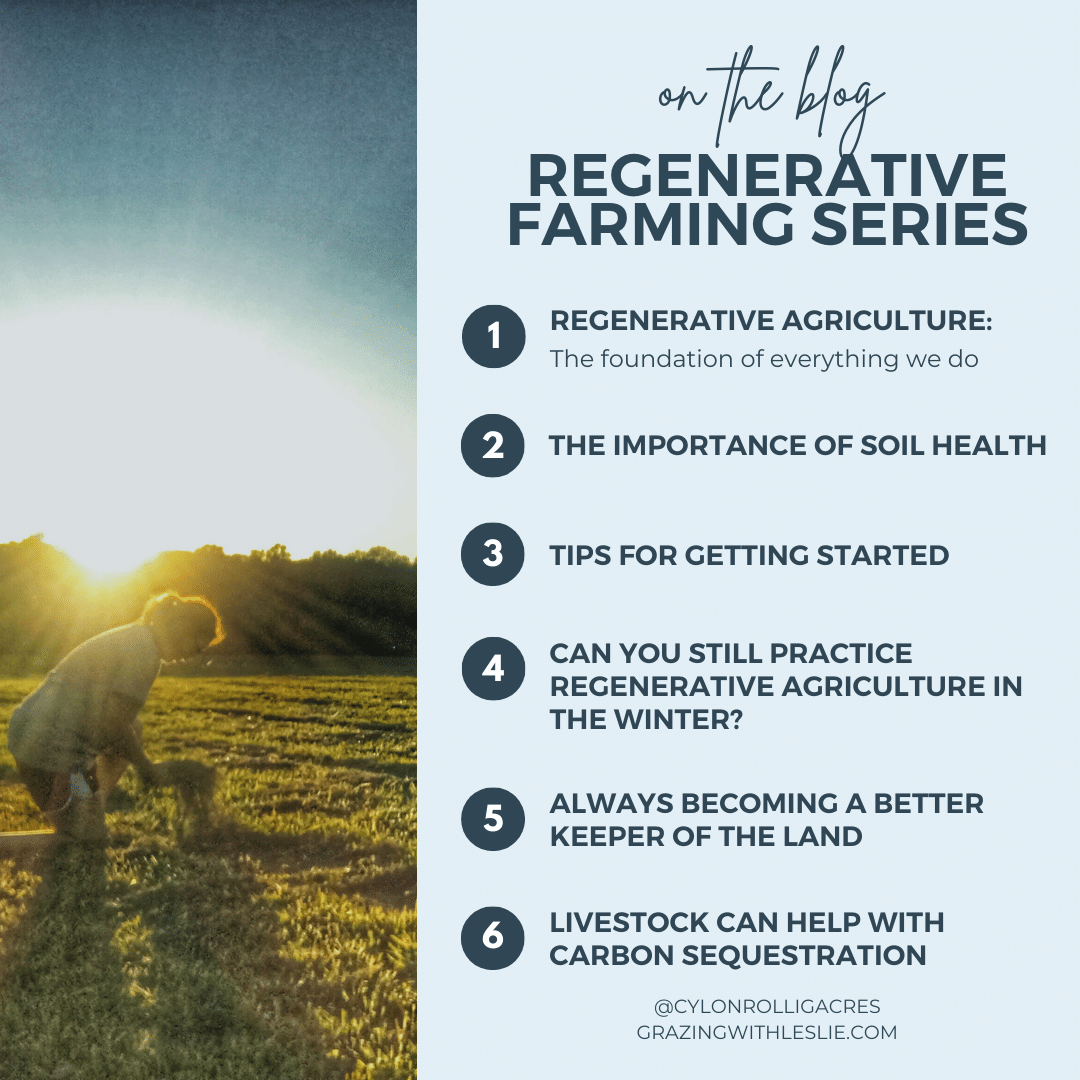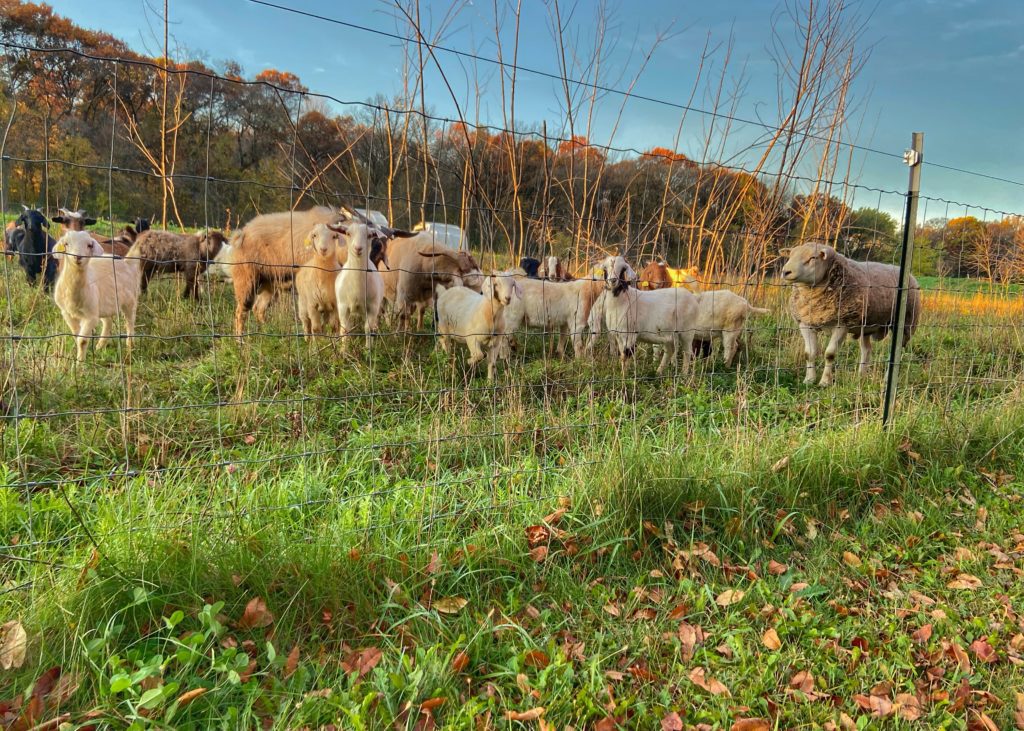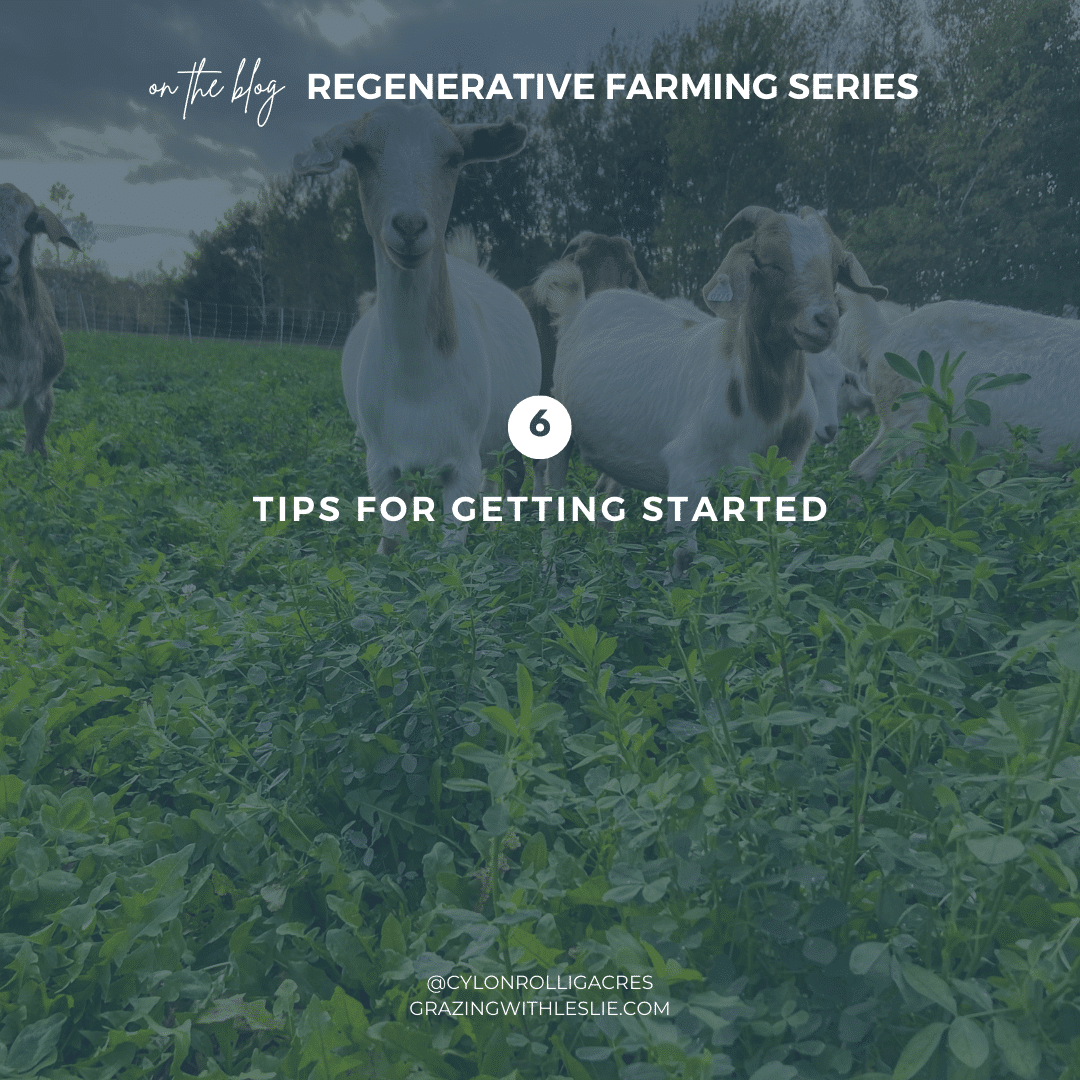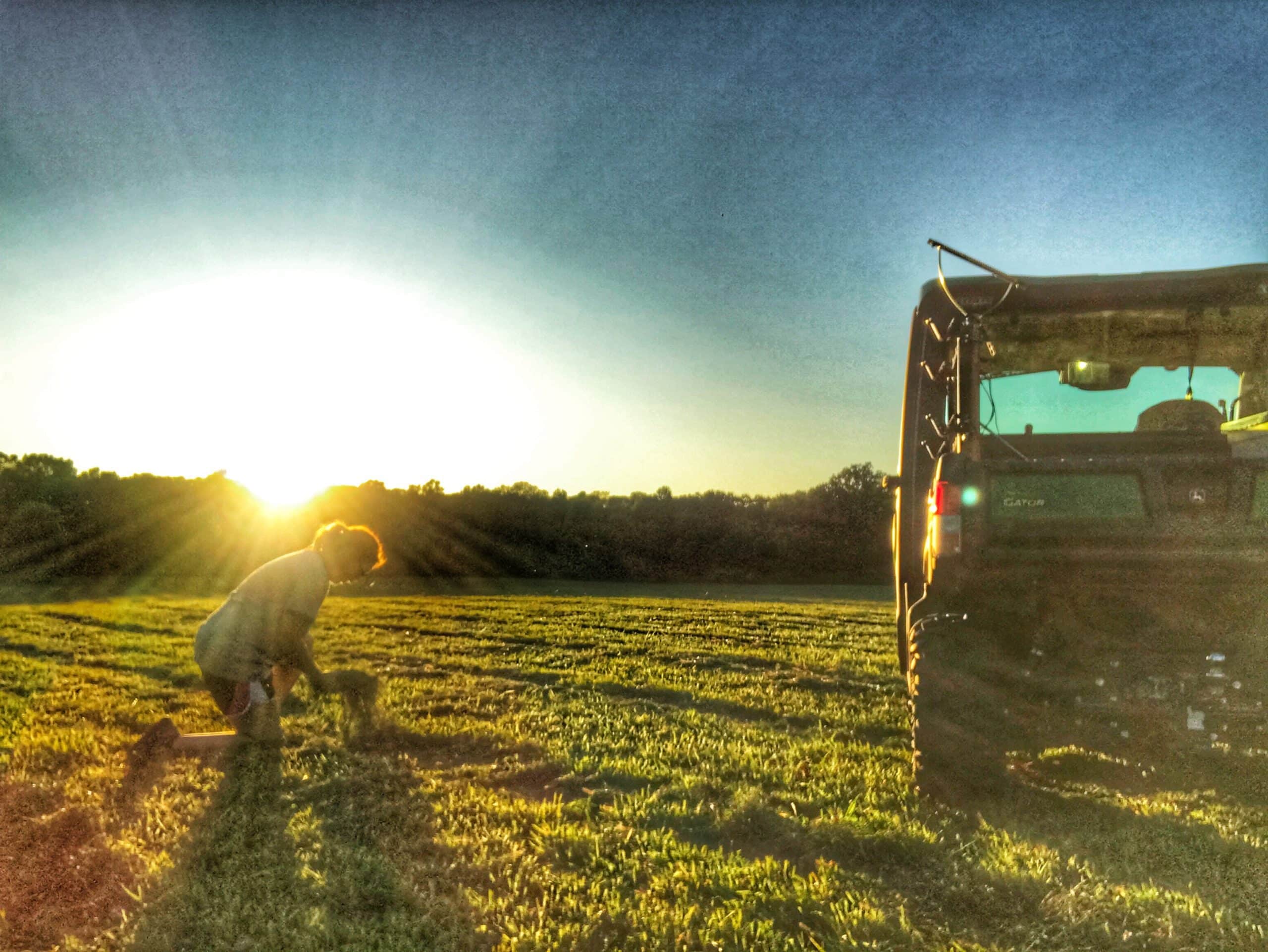I just wrapped up my regenerative agriculture series on the blog. The series featured an in-depth look at regenerative practices, from the lens of our farm, along with resources based on scientific research and practical advice to getting started:


1. Regenerative agriculture: It’s the foundation of what we do
For our farm, regenerative agriculture is really at the core of everything we do.
First, let’s define regenerative agriculture. Based on a review of 200+ scientific journal articles, regenerative agriculture is based on:
- Farming methods (the process), such as using livestock, cover crops and reducing or eliminating tillage
- Outcomes of improving soil health, sequestering carbon, and increasing biodiversity

2. The importance of soil health
Regenerative agriculture, or any agriculture for that matter, starts with the soil. Soil is at the core of everything we do as farmers. It supports the pastures and crops we grow to feed our livestock and our communities.
But it’s not of any value to farmers or even the ecosystem we farm in if it’s not healthy. Soil isn’t just soil. It’s a living organism, that if cared for correctly, will in turn help feed our farm’s crops and livestock, and the rest of the natural environment around us.

3. Can you still practice regenerative agriculture in the winter?
Yes! While it may seem like when everything goes dormant for the season, our work with the farm and the environment around us slows down. That is true, but there are ways we can prepare for winter and during the winter months that still keep the environment, in particular, soil health in mind.
Like all of farming, these practices will look different from farm to farm, based on the type of agriculture, topography, region, size, and so on. So many factors play a role in how we do this as farmers with the goal to protect and feed the soil. A few examples include using cover crops, leaving crop residue (corn stalk stubble), stockpiling forages for grazing, or keeping livestock in a “sacrifice area.”

4. Always becoming a better keeper of the land
My work as a farmer is really rooted in idea of lifelong learning. I’m always learning, whether it’s daily through observation of my livestock or from season-to-season how our pastures grow and flourish (or, not so much with a drought year like last summer).
This concept of always learning holds true with the regenerative agriculture practices I use with my farm. As farmers, we’re working within a biological system, a scientific environment of sorts with no controls. We work with the environment around us and try new practices for the health of our soil, our natural resources, and our farm.

5. Livestock can help with carbon sequestration
On our farm, much like many across the region, the trend to pull livestock off the land started to happen about 60 years ago. For our farm, that noted the beginning of our oak savanna grassland no longer seeing livestock.
That part of our farm came to the mercy of invasive species, particularly buckthorn, prickly ash, and others. So much in that the oaks are now in a position to no longer regenerate due to the additional “tree cover” from these invasives, well as leading to a lack of understory grasses or native forages for wildlife. Taking animals off this land actually caused its degradation.

6. Tips for getting started
Getting started with regenerative farming or conservation practices may seem a bit daunting, especially when what you’re doing is already working or even if you’re just getting started with your farm. Where do I start? Do I need to buy a no-till drill right away? Do I have to no-till all my acres? How do I know if a certain cover crop is the right fit for my needs? How do I transition my herd to rotational grazing?


[…] Regenerative Agriculture Blog Series – Grazing with Leslie says: February 2, 2022 at 6:44 am […]
[…] Regenerative Agriculture Blog Series – Grazing with Leslie says: February 2, 2022 at 9:37 am […]
[…] Regenerative Agriculture Blog Series – Grazing with Leslie says: February 2, 2022 at 6:55 am […]
[…] Regenerative Agriculture Blog Series – Grazing with Leslie says: February 2, 2022 at 6:44 am […]